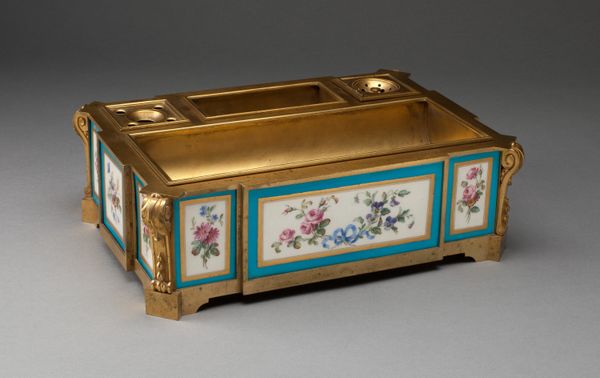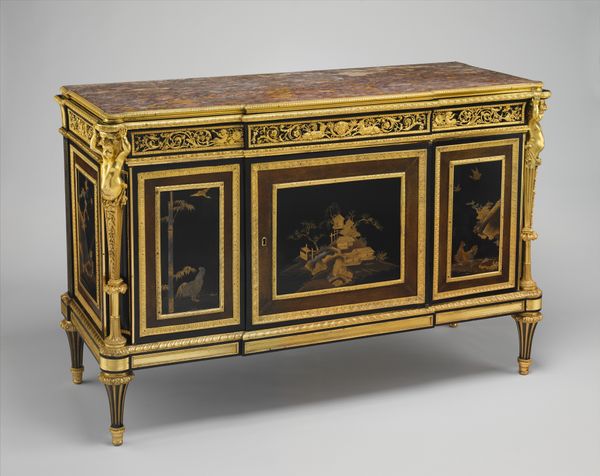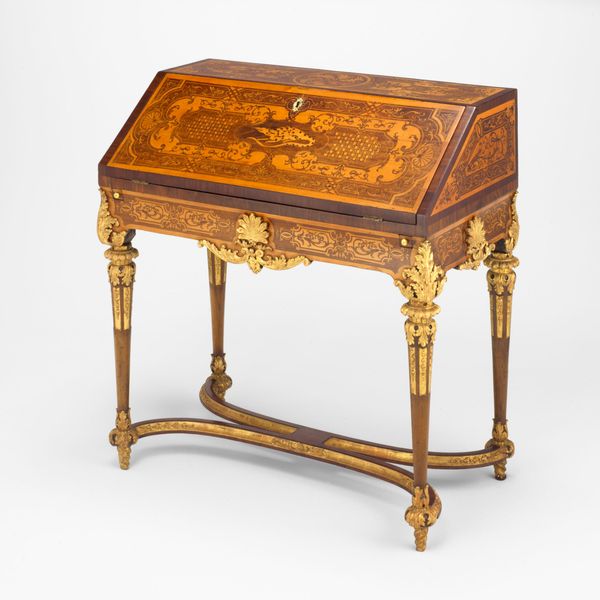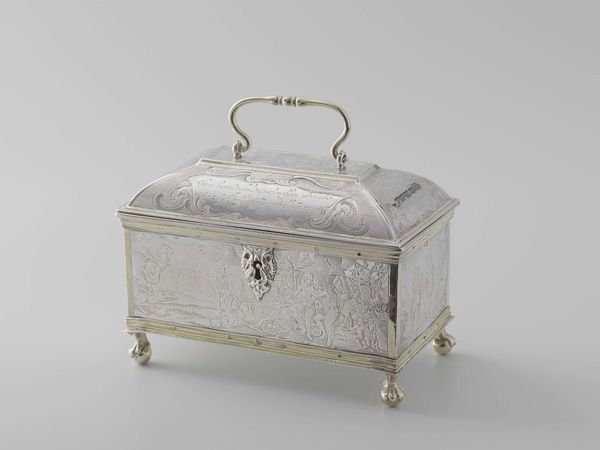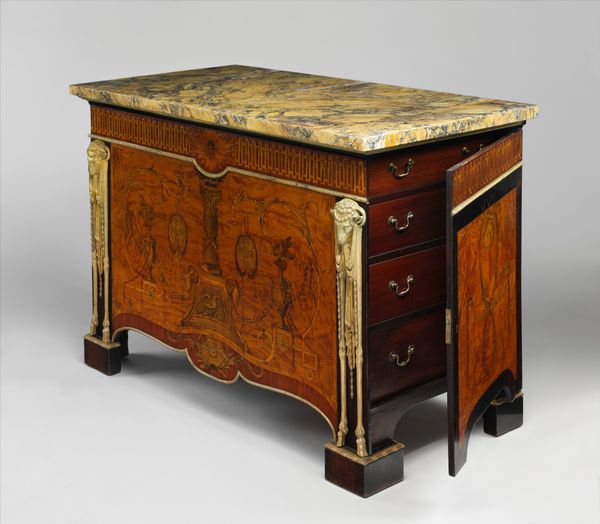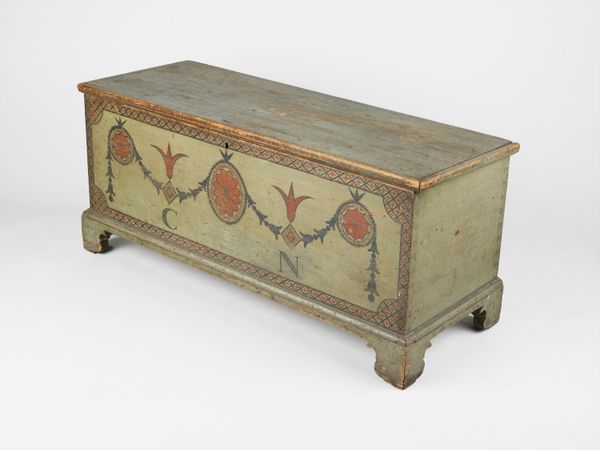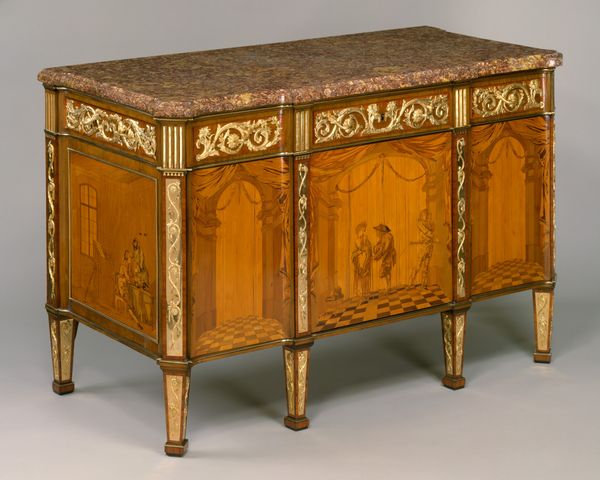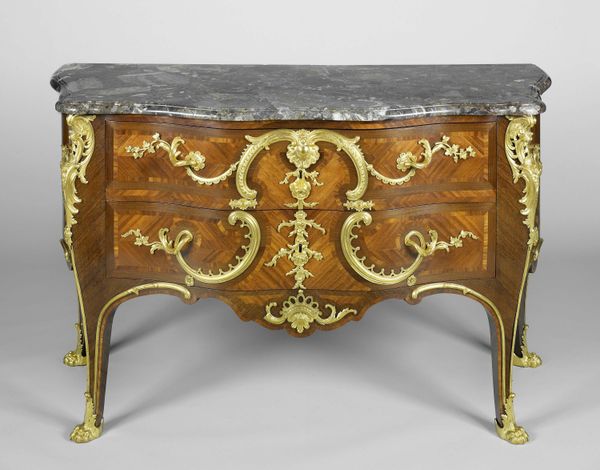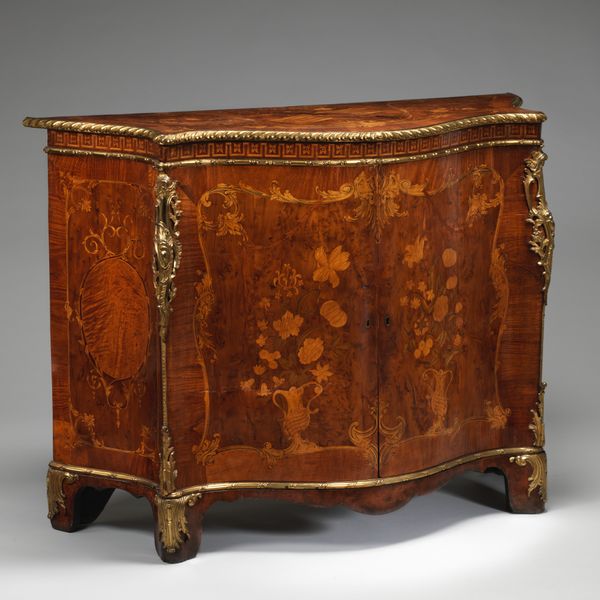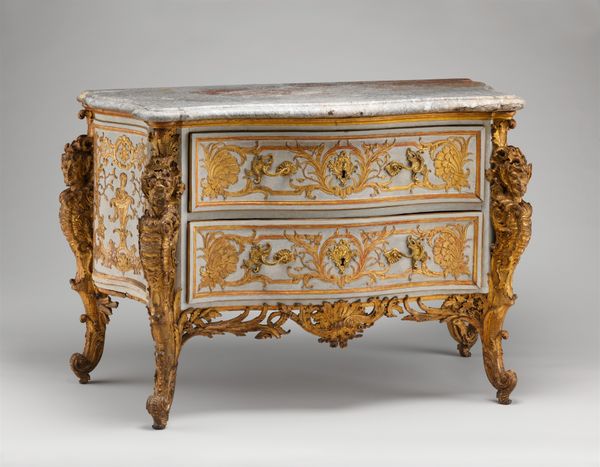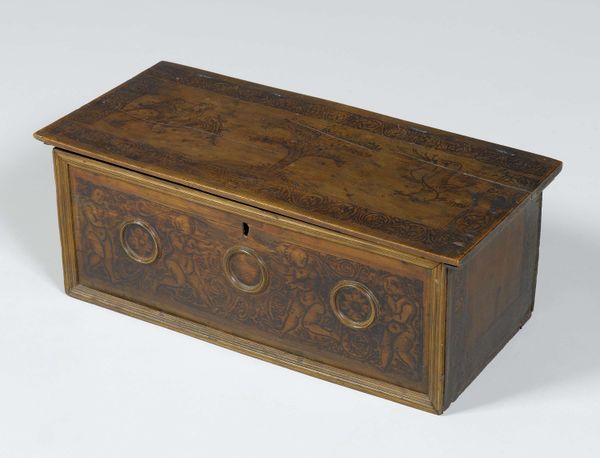
painting, wood
#
folk-art
#
pottery
#
painting
#
furniture
#
wood background
#
folk-art
#
wood
#
decorative-art
Dimensions: 57.2 × 111.7 × 45.7 cm (22 1/2 × 44 × 18 in.)
Copyright: Public Domain
Curator: Standing before us is a charming example of early 19th-century folk art: a chest crafted around 1830. Its current home is the Art Institute of Chicago. Editor: The immediate impression is… sunny. That yellow ochre finish, though aged, evokes warmth. The painted floral arrangements soften what is essentially a sturdy, rectangular form. Curator: Indeed. It’s fascinating how functional objects like this become canvases for personal expression. Consider the context. Mass-produced furniture was becoming more accessible, yet rural communities still cherished handcrafted pieces that reflected their unique identities and cultural values. This was a common desire that gave rise to the tradition of building your own furniture or ornamenting utilitarian objects. Editor: The painted flowers, rising from classically-inspired urns, offer such interesting iconography. Flowers, of course, symbolize life, beauty, but also transience. Placed on a chest – a container of precious items, maybe even keepsakes tied to memory, and sometimes called a hope chest - suggest something deeper. Perhaps hope for the future or cherished memories that continue to live in the owner's household or memories after that household vanishes in time. Curator: That interpretation resonates. Also note the use of stylized feather-like motifs. Motifs, repeated across corners of each face, they are another common component found on a lot of this decorative period folk art of the 19th century. These decorative devices served as accessible ways for any individual to elevate otherwise inexpensive utilitarian things to more elegant states. Editor: Right. They are also employed to add structure. So the feather-like details feel almost like protective talismans warding off evil with its natural iconography. And then the entire construction being elevated on round legs, gives an overall sense of prosperity in humble settings. Curator: The layering of the flowers above a faux fluted bowl makes a visual symbol to both growth and foundation; this is fascinating. And thinking more from my Historian stance, I can’t help to see these pieces, still remaining from early settlement days in our North Eastern States, surviving after decades of massive, paradigm shifting socioeconomic events, that completely refigured rural life, making art forms like this vanish. Editor: Very good point! It reminds us to also appreciate the stories woven into even the simplest of forms. They are visual records. Curator: Precisely. They reveal as much about a society’s material conditions as they do its enduring human spirit. Editor: A beautifully painted echo of the past then. Thanks for unpacking this piece with me, seeing it under the lens of history certainly allows me a greater understanding about these vessels of iconography and memory!
Comments
No comments
Be the first to comment and join the conversation on the ultimate creative platform.
